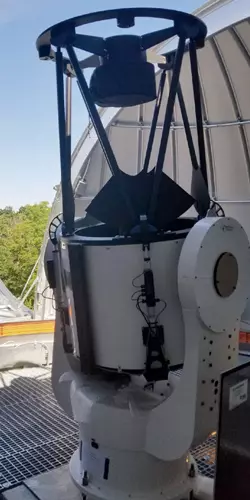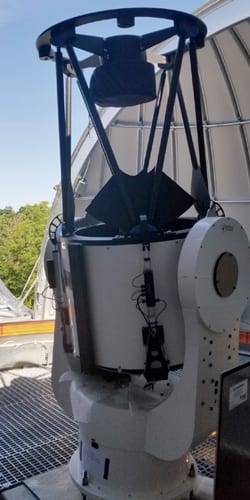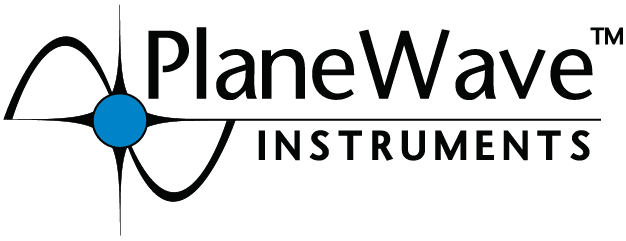Wellesley College


Sitting 13 miles west of Boston under suburban skies (and a mere 32m above sea level!) is Wellesley College, the world’s preeminent college for women. Since 1870, Wellesley has given women the education and skills to make a difference in the world. With a student body of about 2,400, Wellesley can provide specialized instruction and plenty of hands-on learning experiences. Wellesley astronomers have embraced this kind of pedagogy since its beginnings, and their students have had an impact on the astronomical world all the way back to Annie Jump Cannon (class of 1884).
Whitin Observatory
Wellesley College’s Whitin Observatory, built in 1900 and last renovated in 2010, is the home to the Astronomy Department and its telescopes. Its historic 12” and 6” Alvan Clark & Sons refractors are still in use by the hundreds of students who take introductory astronomy each year and for monthly public observing events. The observatory’s first modern reflector, a Boller and Chivens 24” Ritchey-Chrétien, was installed in 1966 and served as a hub for student training and student-faculty research on variable stars, asteroids, and exoplanets until its retirement last spring.
The Planewave CDK700 is the observatory’s first new telescope in more than 50 years, bringing state-of-the-art technology to a new generation of Wellesley students and expanding the capabilities for research projects. Each year (as with its predecessor) Professor Kim McLeod will teach about a dozen young women to use the CDK to carry out term projects ranging from galaxy surface brightness profiles to open cluster HR diagram age determinations to light curves of exoplanets, supernovae, variable stars, and asteroids. Students will also join as partners in faculty research, starting this summer with follow-up observations for TESS (the Transiting Exoplanet Survey Satellite).
The Planewave CDK700 is the observatory’s first new telescope in more than 50 years
The Planewave CDK700 at Wellesley
But the versatile CDK700 and its modern interface will also enable Wellesley astronomers to expand student access to CCD astronomy and new kinds of projects. Its second Nasmyth port will see the installation of a student-built fiber-fed spectrograph to be used for various courses, and its remote and automated capabilities will enable observations to continue after the students go to bed (to be ready for their morning classes!).“
